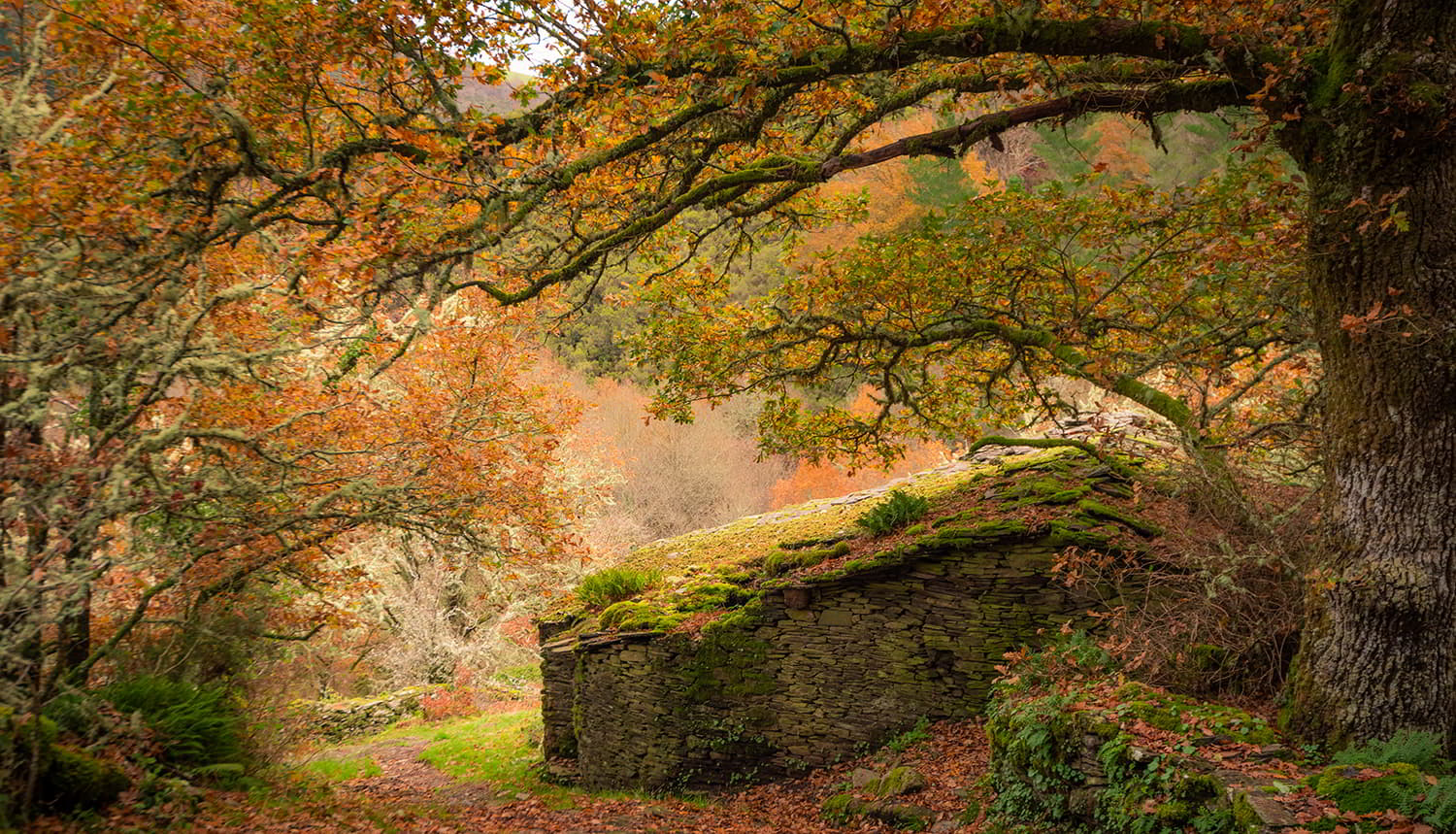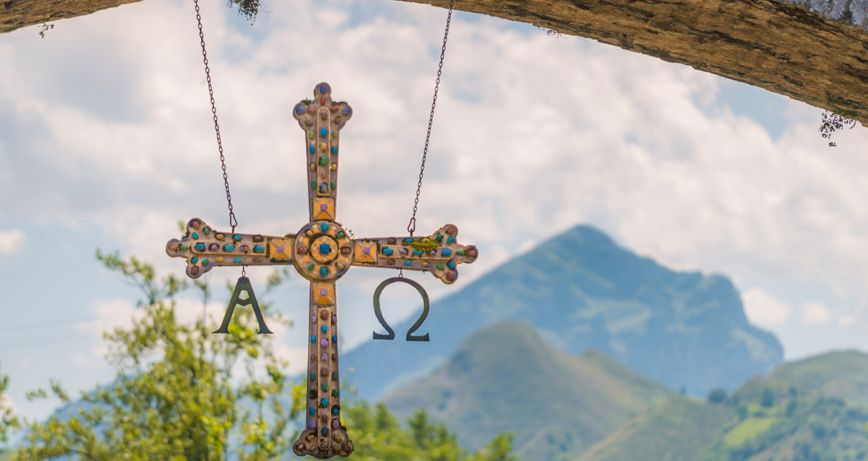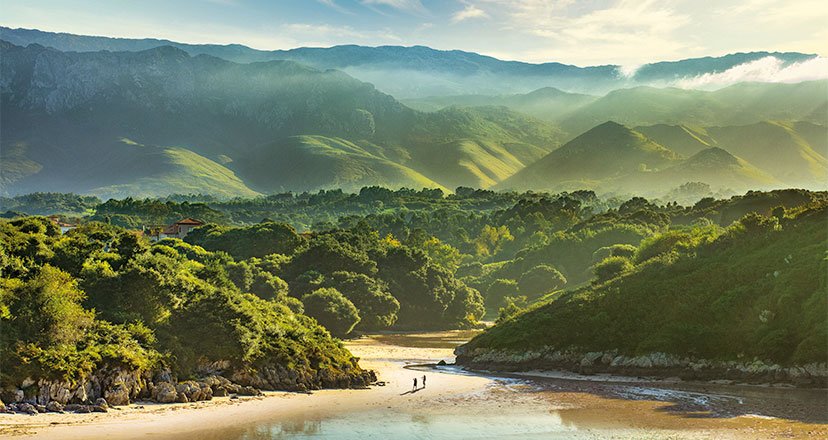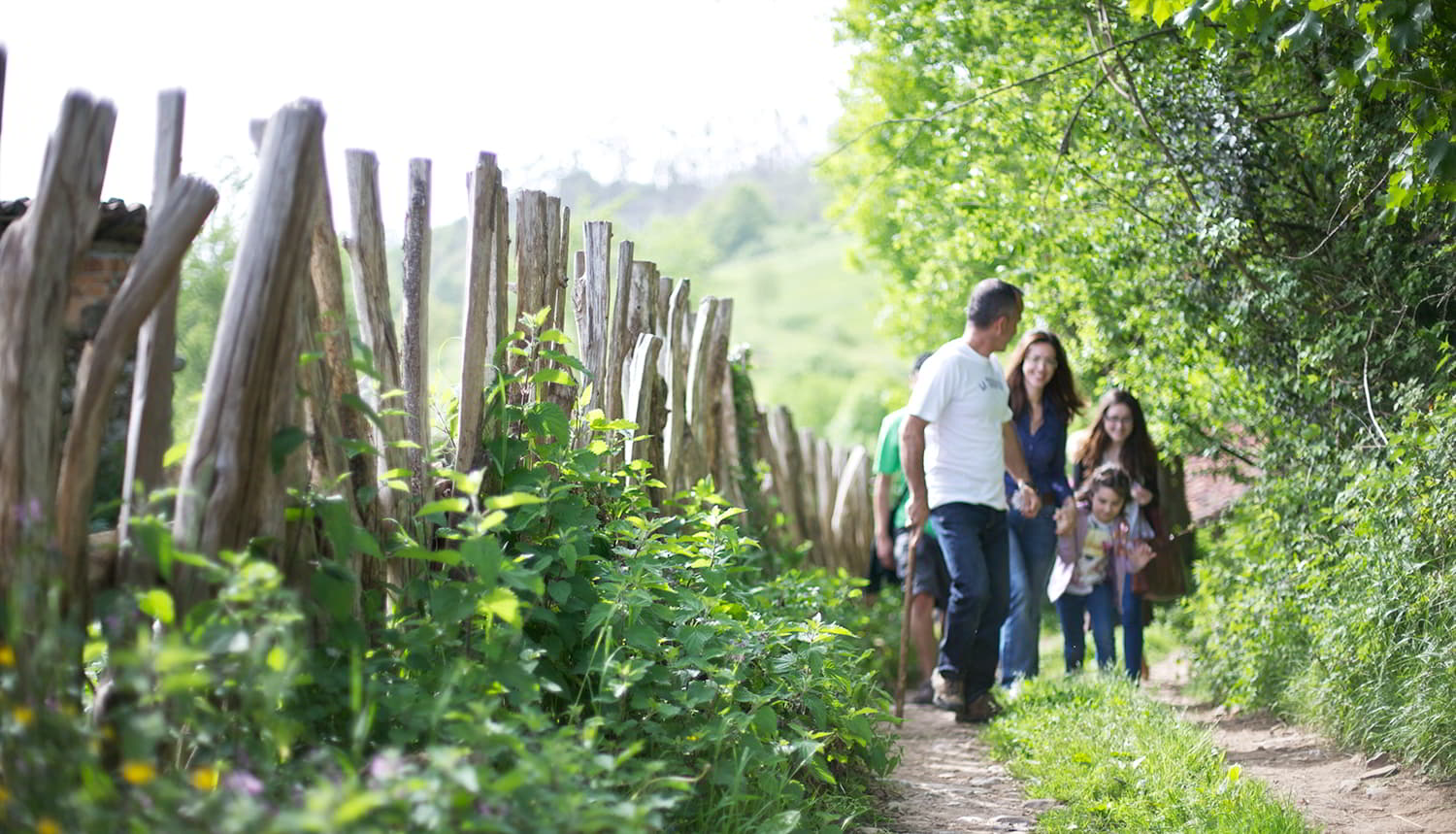Back Explore Asturias and discover Spain's natural paradise
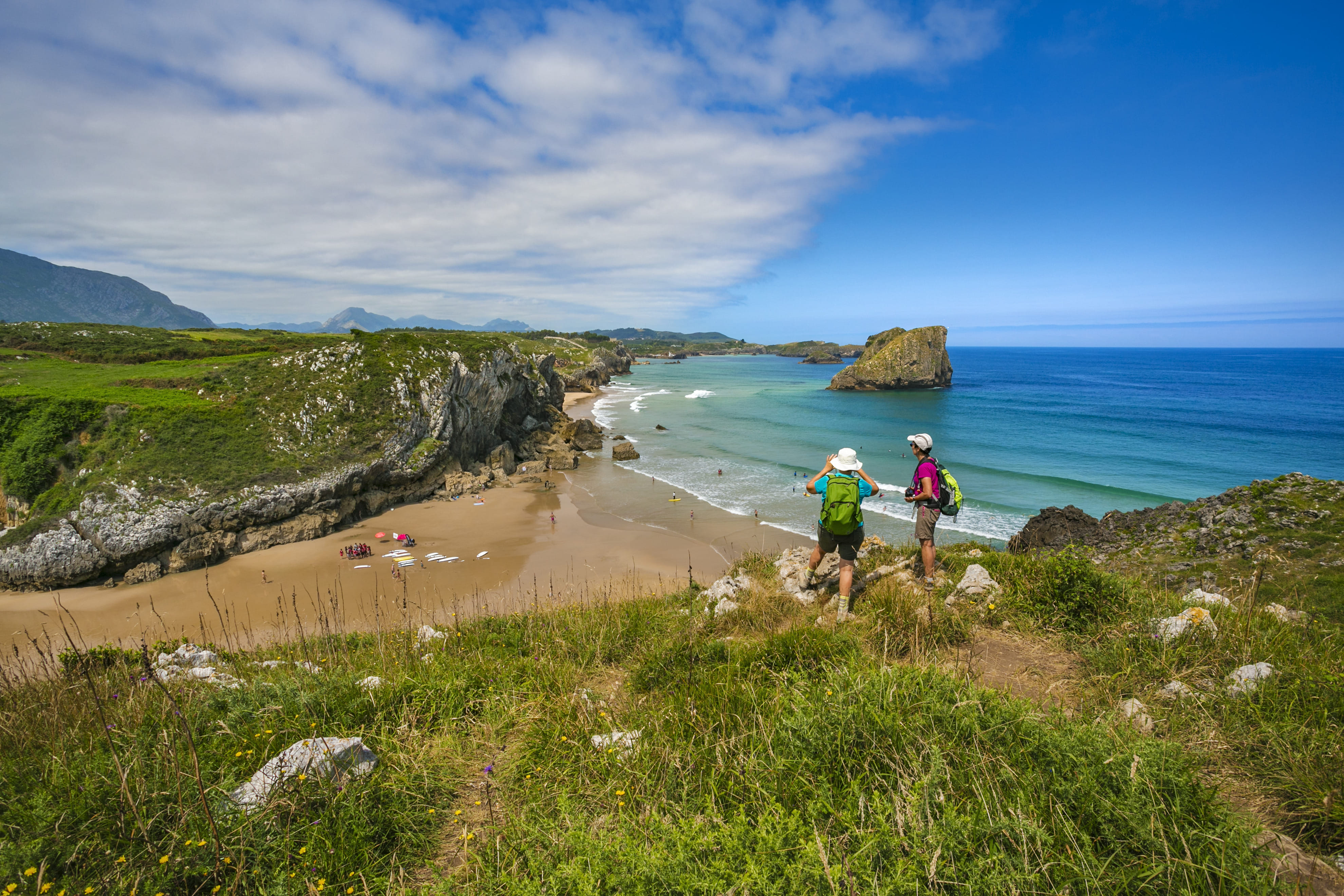
Discover the magic of Asturias: A natural paradise to be explored
Explore Asturias, Spain's natural paradise. Ecotourism, gastronomy, beaches and the charm of rural tourism. Historic cities and their rich cultural heritage
In the north of Spain lies the hidden treasure of Asturias, a veritable Eden that stretches along more than 400 kilometres of coastline, caressed by the waters of the Cantabrian Sea. Forming part of the renowned Green Spain, together with Galicia, Cantabria and the Basque Country, Asturias captivates European travellers with its incomparable offer of green tourism, where nature becomes the undisputed protagonist. It is known as the Natural Paradise of Spain.
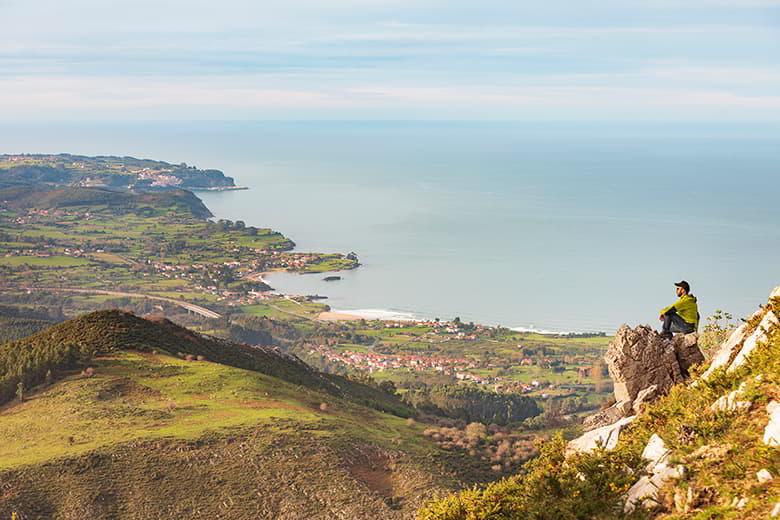
Nature in Asturias: A green paradise for ecotourism
Asturias is not simply a tourist destination, it is a natural sanctuary that beats with a unique essence. With 30% of its territory under environmental or landscape protection, it far exceeds the national average in conservation.
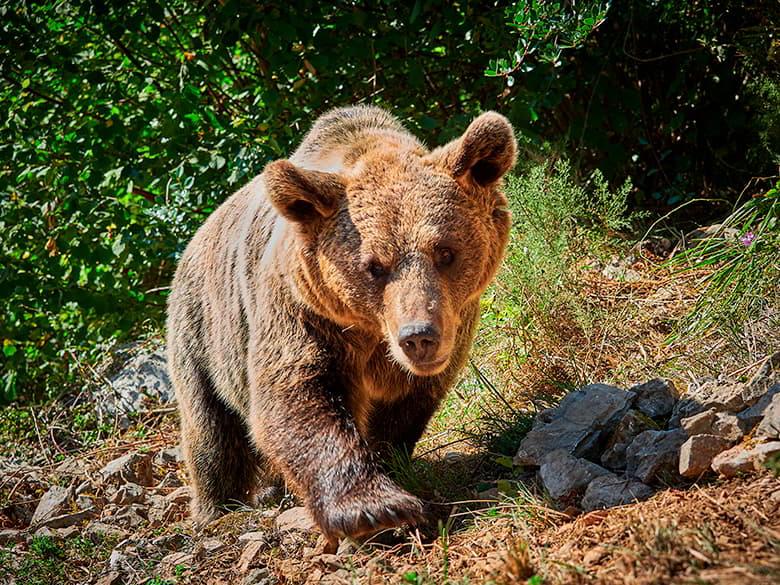
Asturias is home to the Cantabrian brown bear, one of the most emblematic mammals on the Iberian Peninsula. Its forests, such as Muniellos, an integral nature reserve that is home to one of the best-preserved beech and oak forests in Europe, are true treasures of nature, offering an amazing variety of flora and fauna, making Asturias an ecotourism paradise. Watching bears and other mammals is an unforgettable experience.
On the coast, the best preserved in Spain, visitors can delight in the sight of various cetaceans and other marine species, all in a unique and spectacular scenic setting.
Hiking and cycling: explore Asturias and its nature
Asturias is a paradise for hiking and cycling enthusiasts, offering a wide range of routes through stunning natural landscapes .
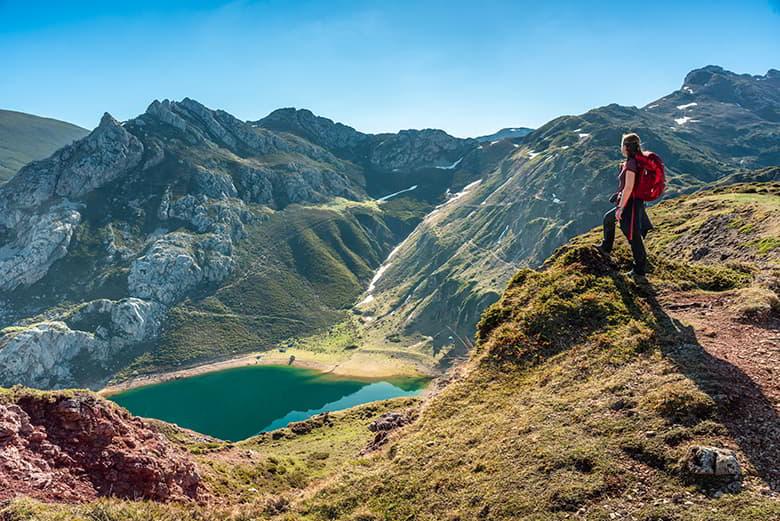
The diversity of terrain and scenery ensures that some routes wind through deep valleys, while others climb majestic mountains. From gentle paths with little gradient to steep trails that challenge the most intrepid adventurers.
Asturias has a wide range of cycle touring options, with numerous greenways, specific trails for mountain bikes (flow trails) and routes designed for different levels and preferences. The truly fascinating thing about touring Asturias by bike is the opportunity to discover wonderful landscapes and corners.
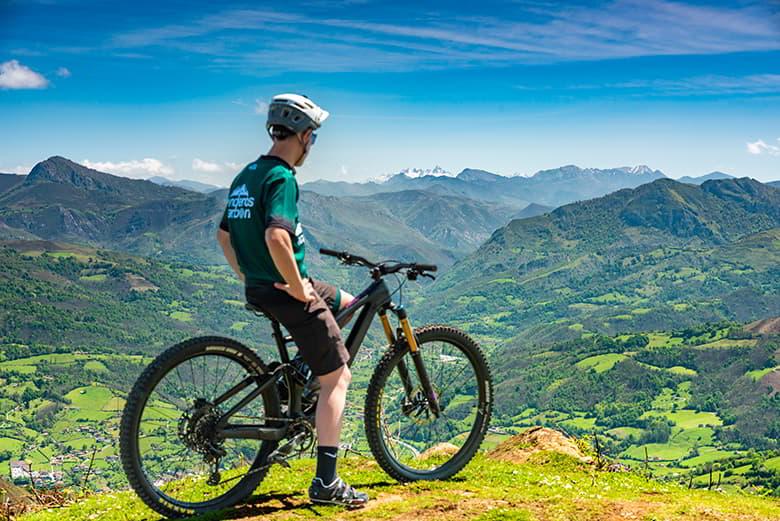
In short, nature and adventure lovers can explore Asturias and its stunning landscapes through a wide variety of hiking and cycling routes, as well as other outstanding active tourism activities such as canoeing, surfing, paddle surfing, horse riding, canyoning and a host of other activities for the more adventurous.
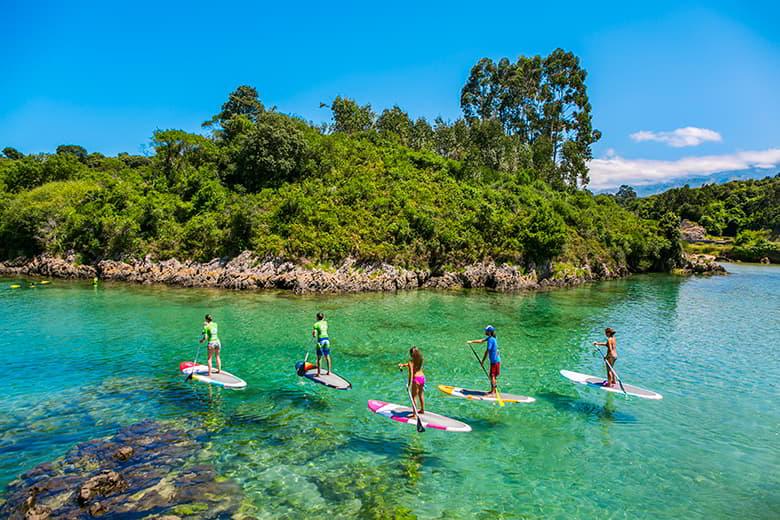
Dream beaches embracing the Asturian mountains
To dive into the beaches of Asturias is to enter a world of unparalleled natural beauty. The enveloping and exuberant nature of these beaches gives the sensation of caressing the mountains.
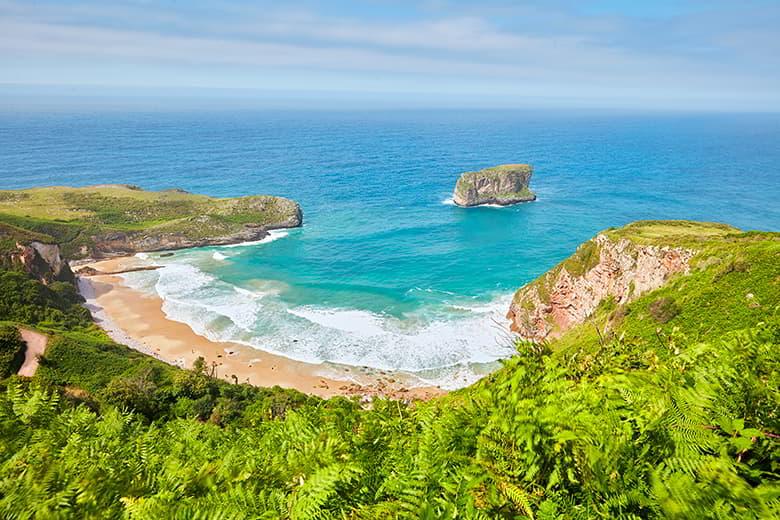
The perfect harmony between sea and mountains is palpable. In Asturias, it is possible to enjoy a high mountain route and, in a short time, dive into a beach, or vice versa. This proximity means that on many Asturian beaches the green vegetation blends with the soft sand, creating a unique landscape where sandy beaches merge with extensive meadows, bordered by cliffs, forests, hills and mountains.
The Highest Peaks
Picos de Europa: Majestic Peaks in Spain
Asturias, with its rugged mountainous profile, is home to some of Spain's most emblematic peaks, creating an incomparable paradise for hikers, mountaineers and climbers. The imposing Picos de Europa, where the Torrecerredo (2,650 m) and the Urriellu (2,519 m) stand out as true natural jewels, consecrate Asturias as the epicentre of mountaineering and climbing in Spain.
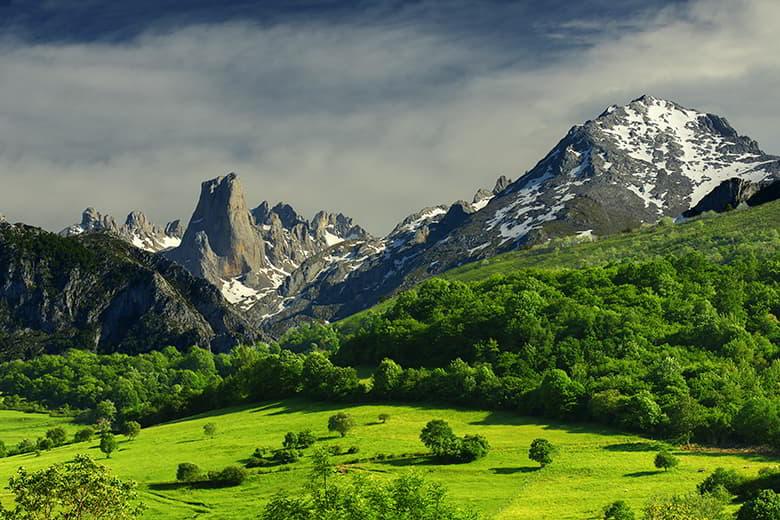
It is not surprising that this land is the cradle of Spanish mountaineering and has continued to attract lovers of outdoor sports for centuries.
Moreover, at the foot of these majestic mountains lies an incomparable historical and natural enclave, the Royal Site of Covadonga. It stands out for its neo-Romanesque Basilica and the Holy Cave. Surrounded by the imposing Picos de Europa and glacial lakes, it offers a landscape of great beauty. It is an ideal place for those looking for history, nature and culture in the same place.
Explore Asturias and its gastronomy: Landscape Cuisine
Asturian gastronomy is a true feast for the senses, an ode to culinary exquisiteness inspired by the surrounding landscape. It is a cuisine rooted in tradition, where fresh, seasonal ingredients are the cornerstone of every dish. It is a philosophy that embraces the concept of "slow food" and "kilometre zero", bringing to life an authentic dining experience that fuses traditional flavours with innovative touches, all based on the excellence of local produce.
Local products as appreciated asbean stew, stew, cheeses, cider and wine. You read that right, wine, produced since the Middle Ages in the south-western part of the region, and which goes perfectly with the different dishes of Asturian gastronomy, adding a touch of distinction to each meal.
As a result of all this, today there are numerous gastronomic proposals in Asturias such as visits to cheese dairies, cider presses (where cider is made) and wine cellars, learning about oyster farming, learning how to make cheese or beer, taking part in the work on a farm, attending the arrival of fishing boats at the port and seeing how their fish and shellfish are auctioned... These are highly educational activities that will leave an indelible memory.
Fabada asturiana: Star dish of the region
Fabada asturiana, or simply fabada, is the traditional dish of Asturian cuisine, and is made with Asturian faba beans, and the so-called compangu (accompaniment) based on sausages such as chorizo and Asturian black pudding, and also pork. It is undoubtedly one of those gastronomic experiences made in Asturias that you have to have.
Natural cider: emblematic drink
Asturias has an emblematic drink, natural cider, which is the only one in the world that is poured (it is served from above with the arm outstretched), and it is the oldest of all those that have come down to the present day.
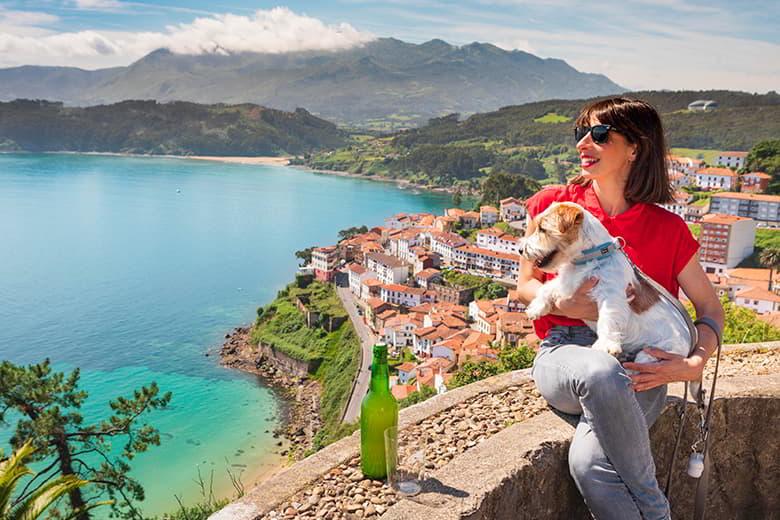
Asturian cheeses: Dairy treasures
Cheeses are an essential part of the gastronomic culture of Asturias, with more than 50 artisan varieties that delight the most demanding palates, making this region one of the main cheese spots in Europe.
Rural tourism: A retreat of peace and tranquillity
Throughout its territory, Asturias is home to a multitude of villages that look like something out of a postcard, standing out for their incomparable beauty, their privileged natural environment and their firm commitment to the conservation of the most deeply-rooted traditions. Places where the hospitality of its people is one of the most valued attributes in this region.
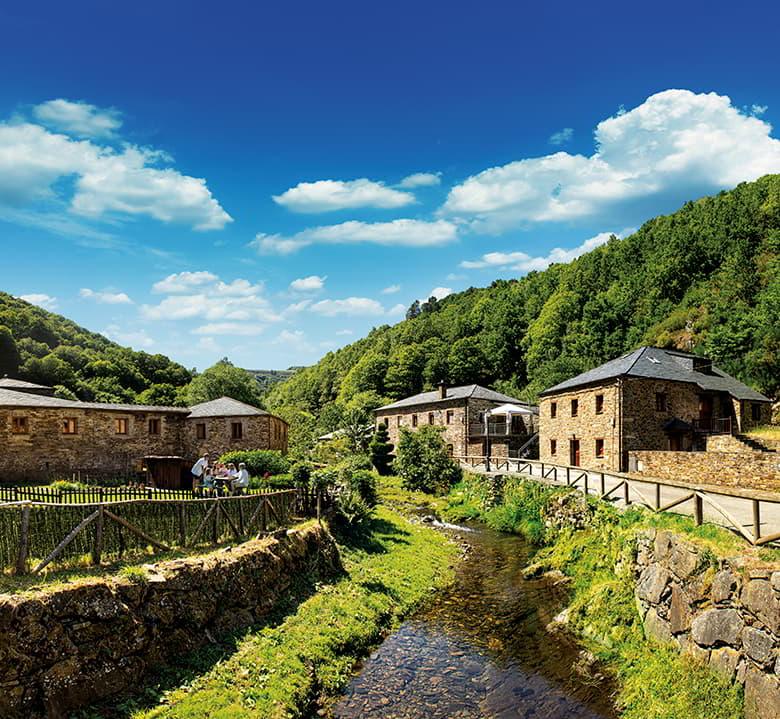
Within its valuable ethnographic heritage, there are several villages with hórreos and paneras, emblematic constructions designed to preserve foodstuffs from humidity and animals, thus guaranteeing their optimal conservation. Each region of Asturias has different styles of these traditional constructions, and many are preserved in magnificent condition in some villages.
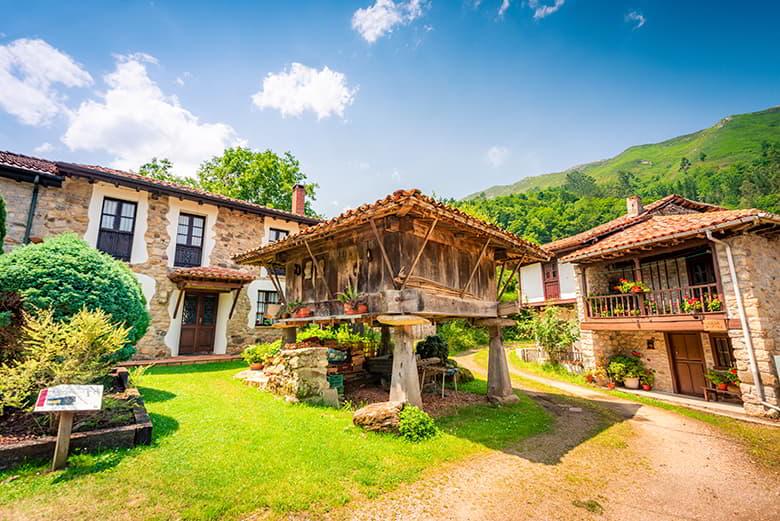
Exploring rural tourism in Asturias is a unique experience, imbued with the charm and authenticity of this region.
Oviedo, Gijón and Avilés: cities with history and charm
Urban Asturias is distinguished by its three main cities: Oviedo, Gijón and Avilés, all equidistant and excellently communicated, located only half an hour by car from each other.
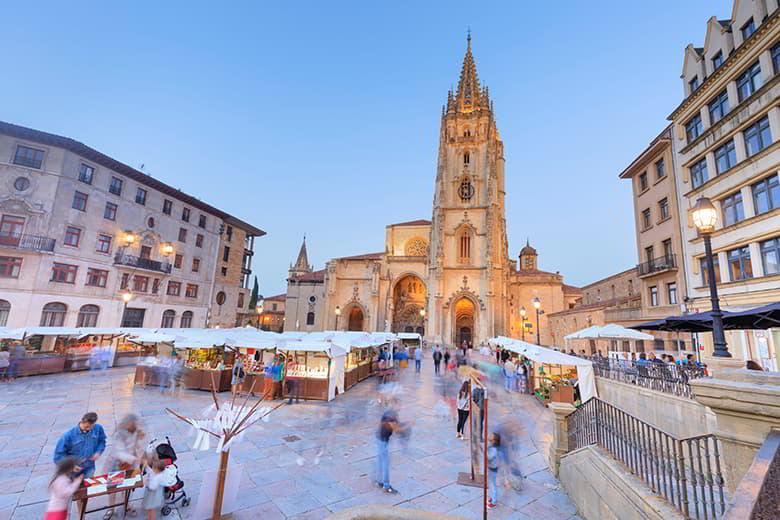
Oviedo, the capital of Asturias, has its roots in the Middle Ages, and its origins go back to the historical period of the Kingdom of Asturias, which gives it great cultural relevance. It is world renowned for its Pre-Romanesque Art or Asturian Art, and its historic centre is home to a wealth of monuments and impressive museums such as the Fine Arts and Archaeological Museums. With a welcoming and serene atmosphere, Oviedo is a small city that is easy to get around, offering a unique experience.
Gijón, a coastal city in Asturias, is the most populated city and has a history dating back to pre-Roman times. Its beautiful beaches and promenades are emblematic, providing a lively and bustling scene, full of life and culture. Museums and cultural venues abound, adding a unique dynamism to this coastal city.
Avilés, with an impressive Old Town, was a notable city in the Middle Ages and in later times thanks to its great commercial traffic, driven by its port and its estuary. Today, it stands as a symbol of avant-garde architecture thanks to its Niemeyer Centre, a contemporary cultural space that brings modernity and freshness to the city's historical heritage.
Cultural Heritage of Asturias: A Journey in Time
Asturias is a cultural treasure that spans from its remote prehistory to its vibrant contemporary manifestations.
Among the highlights of its cultural heritage is the Pre-Romanesque Art or Asturian Art, which emerged during the flourishing of the Kingdom of Asturias in the Middle Ages. Some of the manifestations of this art - unique in the world - are recognised as World Heritage Sites by UNESCO, captivating those who contemplate them with their uniqueness and beauty.
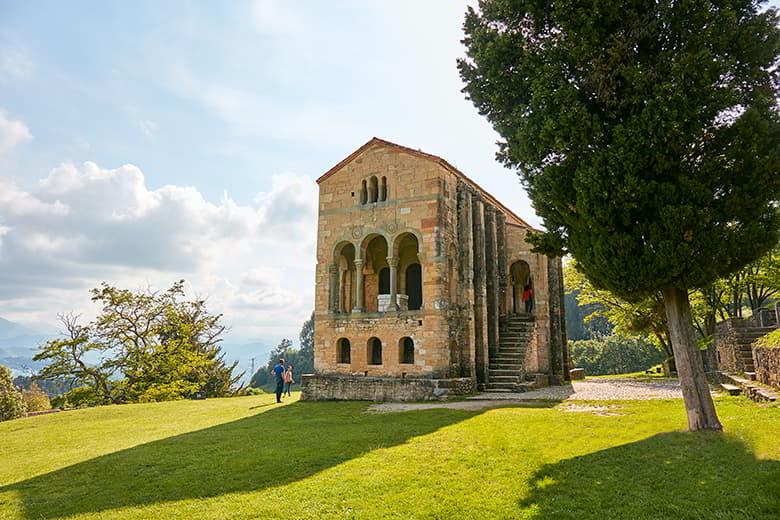
Asturias is also home to many expressions of cave art, with five caves declared World Heritage Sites.
The ethnographic heritage of Asturias is another treasure to be discovered, present both in specialised museums and in the numerous villages scattered throughout the Asturian geography. This legacy reflects the life and traditions of past generations, offering a unique insight into local history and culture.
The industrial history of Asturias also leaves a remarkable mark, evident in the old coal mines - with experiences that even allow you to descend into a coal mine 600 m deep - the iron and steel works, the industrial villages and the thematic museums that dot the region. Many of these resources have been preserved and are accessible to those interested in exploring the industrial and mining tourism resources of Asturias.
In addition, Asturias offers a wide range of cultural leisure activities of all kinds.
The Way of St. James: One of the most important cultural itineraries of Humanity
The Way of St. James in Asturias is an emblematic route and one of the main pilgrim routes that take pilgrims to Santiago de Compostela. Asturias and specifically Oviedo is the origin of the Way, as it was the Asturian King Alfonso II who first promoted it. So this route crosses the region of Asturias, offering pilgrims a unique and varied experience.
One of the outstanding values of the Camino de Santiago in Asturias is its natural beauty. Pilgrims have the opportunity to travel through breathtaking landscapes, from the Cantabrian coast with its cliffs and beaches to the green valleys and mountains of the Asturian interior. One of the unforgettable sensations of this Camino is the uniqueness of doing the route with a view of the imposing Picos de Europa on one side, and the beaches surrounded by a blanket of green on the other.
In addition to picturesque villages, pilgrims can visit numerous churches, monasteries and other places of historical and religious interest. Highlights include Oviedo Cathedral, which houses the Holy Chamber with the relics of Saint Saviour, and the Monastery of San Salvador de Cornellana, one of the oldest monasteries in Asturias.
Explore Asturias! Plan your trip and take advantage of the connections to get there via direct flight and high-speed train.
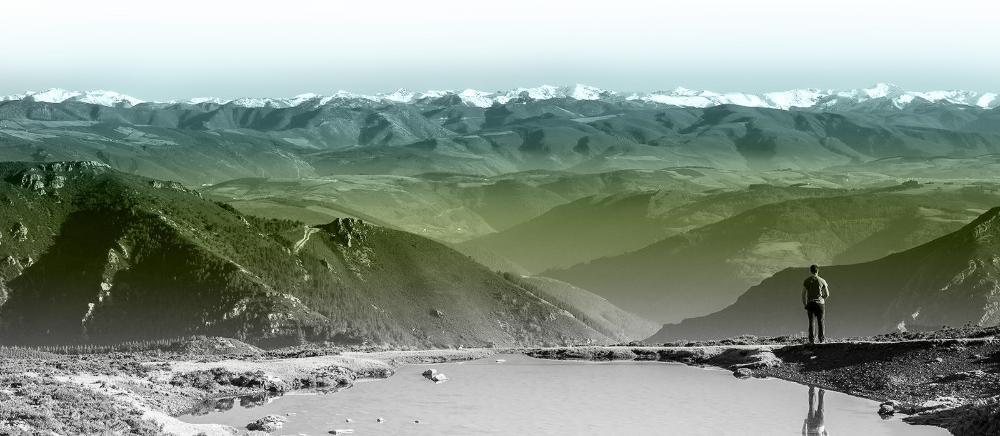
Subscribe to our newsletter and take advantage of offers, discounts, and news
Subscribe

